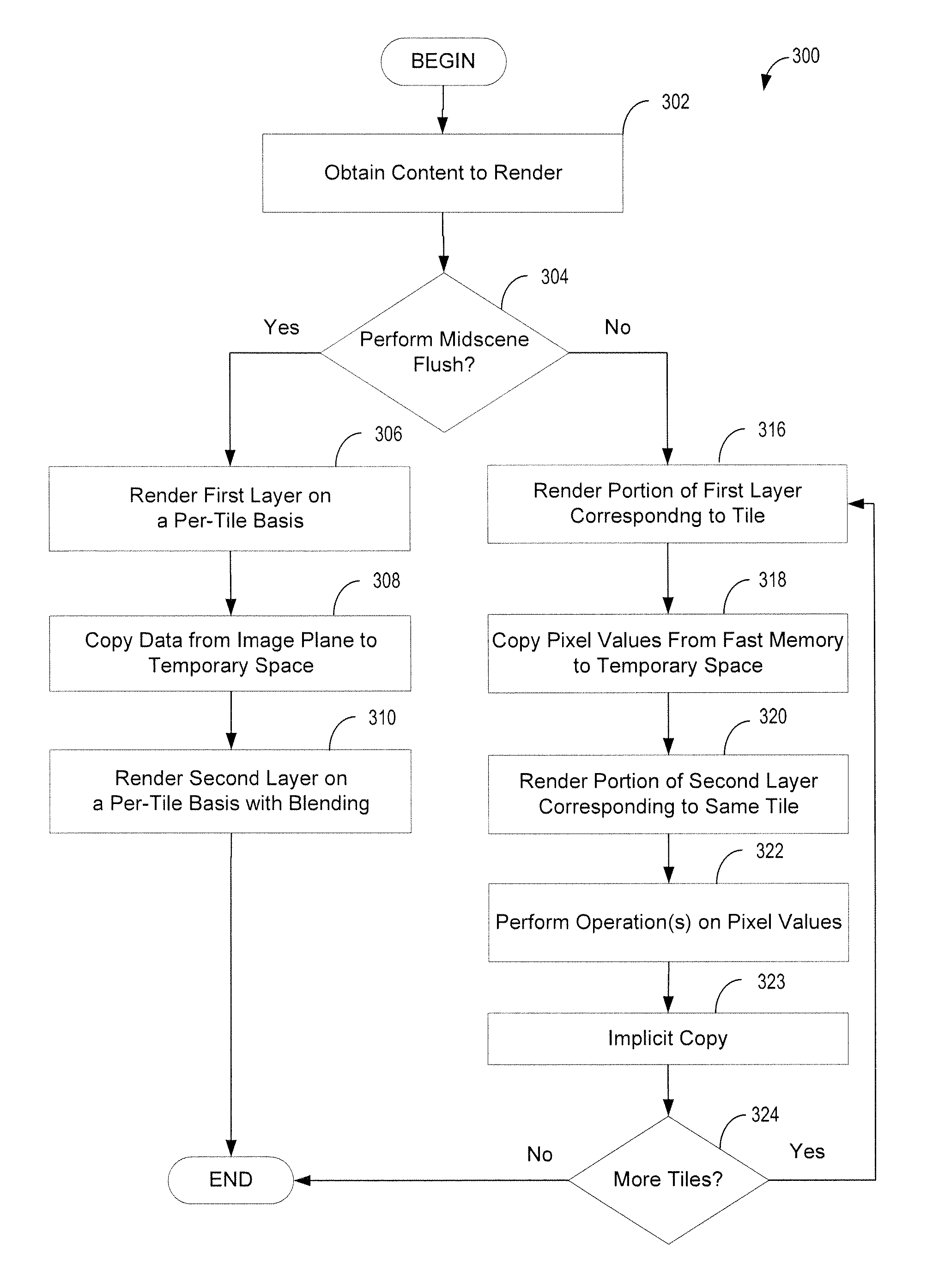System and method for layering using tile-based renderers
- Summary
- Abstract
- Description
- Claims
- Application Information
AI Technical Summary
Benefits of technology
Problems solved by technology
Method used
Image
Examples
Embodiment Construction
[0018]The inventors have recognized and appreciated that greater utility can be derived from a GPU that supports tile-based rendering if the GPU may be configured to perform, more efficiently, tile-based rendering of content that comprises one or more content layers. In particular, the inventors have recognized that it may be advantageous to render such content one tile at a time, rather than render the content one layer at a time. In the former “layer-then-tile” approach, the content may be rendered one content layer at a time, and each such content layer may be rendered, one tile at a time. On the other hand, in the latter “tile-then-layer” approach, the content may be rendered one tile at a time calculating pixel values associated with each tile may comprise calculating pixel values from multiple content layers.
[0019]The inventors have recognized that tile-based rendering is likely to become more prevalent because devices that can benefit from tile-based rendering are becoming mo...
PUM
 Login to View More
Login to View More Abstract
Description
Claims
Application Information
 Login to View More
Login to View More - R&D
- Intellectual Property
- Life Sciences
- Materials
- Tech Scout
- Unparalleled Data Quality
- Higher Quality Content
- 60% Fewer Hallucinations
Browse by: Latest US Patents, China's latest patents, Technical Efficacy Thesaurus, Application Domain, Technology Topic, Popular Technical Reports.
© 2025 PatSnap. All rights reserved.Legal|Privacy policy|Modern Slavery Act Transparency Statement|Sitemap|About US| Contact US: help@patsnap.com



